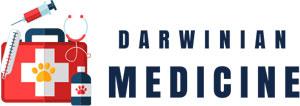There are dozens of medical specialties and subspecialties you can pursue as a physician. This definitive guide breaks down over 30 different paths—from the seven core rotations you’ll encounter in medical school to highly competitive surgical specialties to diverse fellowship options. Read on to discover the training, lifestyle, salary, and more for each medical specialty.

The Core 7 Medical Specialties
Let’s start with the seven specialties that form the foundation of clinical rotations in medical school:
Family Medicine
Family medicine physicians are the backbone of primary care. As generalists, they treat a broad range of patients—from newborns to seniors—and conditions—from minor illnesses to chronic disease management. With no organ or disease restrictions, family doctors focus on whole-person care for every member of the family.
Family medicine has one of the lowest average physician salaries at $250,000 per year. It is also one of the least competitive specialties to match into. The varied scope and flexible lifestyle make family medicine an appealing choice for those seeking long-term doctor-patient relationships.
Internal Medicine
Think of internal medicine physicians as the generalists of general medicine. They treat adults across a massive spectrum of medical conditions, from everyday diagnoses to complex multi-system diseases. With expertise across nearly all fields, internists often serve as primary care physicians and quarterbacks of patient care.
There are countless internal medicine subspecialties, covered later in this guide. Salaries average $260,000.
Pediatrics
Pediatricians are the equivalent of internal medicine doctors but for babies, kids, adolescents, and young adults. They care for patients from birth through the age of 21. With a focus on early intervention and prevention, pediatricians play a vital role in setting up children for lifelong wellbeing.
Like family medicine, pediatrics is one of the least competitive matches. The average salary stands at approximately $250,000 per year.
OB/GYN
OB/GYNs specialize in two closely linked fields: obstetrics and gynecology. Obstetricians provide medical and surgical care to pregnant patients before, during, and after childbirth. Gynecologists focus on women’s reproductive health, including puberty, family planning, menopause, and beyond. From the first period to the final stages of menopause, OB/GYNs help women at every phase of life.
General Surgery
Surgery is a broad specialty in which physicians operate to diagnose, treat, and prevent diseases or injuries. General surgeons have expertise across the entire body and can manage a wide range of conditions.
With advanced technical skills and challenges ranging from routine to incredibly complex, surgery is a highly competitive and demanding career path. Average salary exceeds $400,000.
Neurology
Neurologists diagnose and medically manage nervous system conditions—both central (brain and spinal cord) and peripheral (nerves outside brain and spinal cord). From chronic progressive illnesses like ALS to sudden acute events like stroke, neurologists treat devastating diseases.
As research in neuroscience advances at a rapid pace, the future is bright for understanding and treating neurological conditions. Average neurology salary stands at approximately $275,000.
Psychiatry
Psychiatrists assess and treat mental health disorders through a combination of psychotherapy (“talk therapy”) and prescription medications. Unlike psychologists, psychiatrists attend medical school and complete the same core clinical rotations as other physicians. With an integrative approach examining biological, psychological, social, and other factors, psychiatrists aim to alleviate distress and restore day-to-day functioning.
Psychiatrist salary averages nearly $300,000 per year.

Highly Competitive Specialties
In addition to the seven core rotations, there are several ultracompetitive specialties consistently at the top for salary and applicant desire. These include:
Plastic Surgery
Plastic surgeons improve cosmetic appearance and reconstruct form and function by surgically reshaping soft tissues of the body. Cosmetic procedures—like breast augmentation and liposuction—entail elective surgeries to enhance appearance. Reconstructive procedures—like cleft lip and palate repair—reconstruct anatomy damaged by trauma or disease.
With an average salary exceeding $600,000 per year, plastic surgery is one of the most lucrative and competitive specialties. The field demands top tier technological expertise blended with an artistic eye.
Otolaryngology (ENT)
As head and neck surgeons, ENT specialists—also known as otolaryngologists—treat conditions related to the ears, nose, throat, respiratory and upper digestive systems. They manage diseases ranging from hearing loss and chronic sinusitis to thyroid disorders and head and neck cancer.
ENT’s integration of medicine and surgery, positive lifestyle factors, and $400,000+ average salary make it a highly sought after specialty.
Other Highly Competitive Specialties
While not core rotations, these specialties also rank among the most competitive:
- Urology – surgical specialty managing genitourinary system
- Orthopedic Surgery – surgical specialty focusing on muscles/bones
- Ophthalmology – surgical specialty treating eye disorders
- Dermatology – specialty managing skin, hair, and nail conditions
- Cardiology – internal medicine doctors specializing in heart health

Medical and Surgical Subspecialties
Many physicians pursue subspecialty training via fellowships after finishing residency. These hyper-focused fields require additional years of training but open up new patient populations, procedures, research initiatives, and career opportunities.
Here are some of the many fellowship subspecialties:
Anesthesiology Critical Care
In the ICU, critical care specialists—also known as intensivists—provide around-the-clock treatment for critically ill or injured patients. With expertise in mechanical ventilation, pressors, and other interventions, they help the most unstable hospitalized patients survive.
Diagnostic Radiology
Radiologists leverage imaging modalities like MRI, CT, ultrasound, and more to visualize diseases inside the body. Most diagnostic radiologists spend their days interpreting images and dictating reports. Some also perform image-guided procedures for diagnosis and treatment.
Emergency Medicine Ultrasound
Point-of-care ultrasound at the bedside aids emergency physicians in quickly diagnosing time-sensitive and life-threatening illnesses. From assessing cardiac function after a heart attack to detecting blood around the liver after trauma, ultrasound helps EM doctors rapidly treat emergency department patients.
Pathology
Anatomical and clinical pathologists work behind the scenes to analyze specimens and inform diagnoses. Anatomic pathologists examine biopsies and surgical resections to characterize disease at the microscopic level. Clinical pathologists oversee hospital laboratories evaluating blood, urine, etc.
Preventive Medicine
Leveraging expertise in medicine, epidemiology, statistics, health policy, and more, preventive medicine specialists work to promote wellness in patients and populations. They identify risk factors for disease then implement systemic health interventions. With a public health focus, the field is uniquely positioned to expand evidence-based medicine.
Radiation Oncology
Radiation oncologists treat cancer through targeted radiation to shrink tumors and kill cancer cells. Working closely with medical oncologists and surgeons, they use techniques like stereotactic radiosurgery to deliver tumoricidal doses with minimal damage to surrounding tissues.
Reproductive Endocrinology and Infertility
REI specialists help patients with reproductive system disorders and infertility become pregnant. They accurately diagnose conditions preventing conception then develop custom treatment plans for infertility. From ovulation induction medication to surgery to IVF, REI physicians help build families.
Cardiothoracic Surgery
Cardiothoracic surgeons operate on vital structures within the chest, including the heart, lungs, esophagus, thoracic aorta, and other mediastinal contents. They surgically treat conditions like coronary artery disease and mycotic aneurysms via procedures such as coronary artery bypass grafting and Bentall procedures.
Pediatric Emergency Medicine
Pediatric emergency physicians specifically focus on caring for babies, children, and teenagers with urgent and critical illnesses. They are experts in addressing challenges unique to young patients—like breathing issues, dehydration, and altered mental status.
Interventional Cardiology
Interventional cardiologists specialize in catheter-based procedures to treat cardiovascular disease. Using live x-rays and tiny instruments inserted through blood vessels, they open blocked arteries, repair heart valves, close holes between chambers, and more.
Vascular Surgery
Vascular surgeons operate on blood vessels throughout the body, providing both open surgical and minimally invasive endovascular treatments. They restore blood flow in conditions ranging from torn aortic aneurysms to severe leg ischemia.
Pediatric Surgery
Pediatric surgeons have additional specialized training to operate on babies, children, adolescents, and young adults. From neonatal anomalies to appendicitis in a toddler and ACL tears in a teen, they provide surgical care tailored to kids.
Complex General Surgical Oncology
Surgical oncologists focus their practice on the surgical management of cancer patients. They detect, biopsy, and remove malignant tumors, then coordinate adjuvant chemotherapy and radiation treatments when necessary.
Conclusion
With over 30 specialties detailed here—from family medicine to surgical subspecialization—hopefully you now have a clearer picture of the breadth of career options for physicians. The best medical specialty is the one that aligns with your innate strengths and interests. Evaluate lifestyle factors, types of diseases treated, patient populations, procedures performed, and practice environments as you explore specialization options.
